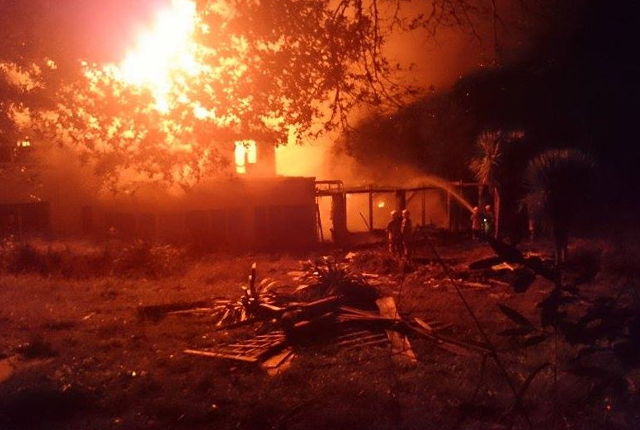Below is an open letter from Isle of Wight Firefighters to all Isle of Wight councillors who may be involved in making a decision on the future of the Fire and Rescue Service. Ed
Dear Councillor,
Once again we have to contact you at short notice due to the last minute issue of the Committee Report and Impact Study regarding the restructuring of the Fire Service (October 2018).
Little time has been given to address our original concerns from the 2018 review. We feel that the latest report has put the blame for perceived lack of effectiveness and efficiency on the current system of shift patterns and firefighters resistance to change in the way we work.
We feel that in truth this is not the case and that this is has been caused by constant reductions in establishment levels across all fire service personnel.
Embraced many reforms, changes and new ways of working
As a workforce we have embraced many reforms, changes and new ways of working over the last ten years.
We are willing to work any reasonable shift pattern to align with changes to the role of the fire service but this must be based on risk and not outdated historical data.
Proposal submitted
It must also be done without compromising crew and public safety. To this end, a proposal has already been submitted to senior fire service management that would align all wholetime resources whilst maintaining a safe crewing level of five firefighters and with no reduction in current establishment.
This includes considerable cost savings.
HMICFRS inspection
Her Majesty’s Inspectorate of Constabulary and Fire & Rescue Services (HMICFRS) preparation for inspection highlighted a lack of risk information provision for firefighters which is still to be addressed.
In the committee report (paragraph 9, page C-2) it is stated that ‘the current shift system was inefficient and that the provision of risk information for firefighters at an incident could be improved.’
This suggests that the current lack of risk information is linked to shift inefficiency, which is not the case.
Errors in report
The latest committee report, which contains errors in current operational resources, is again proposing to reduce overall establishment by crewing appliances with four persons.
This still compromises crew safety and is not aligned to the HFRS policy of crewing rescue pumps with a minimum of five personnel.
The impact report (Appendix A) states that the FBU nationally is opposed to crewing fire appliances with less than five.
Impact of Island’s unique situation
The fact of the matter is that this that this is especially impactful on an island where we have no immediate response from neighbouring services.
The rationale behind the FBU challenge to crewing with less than five is that it compromises safe systems of work.
Contrary to the impact report, no modern technology has replaced the need for a crew of five to be able operate safe systems of work in all but the exceptional circumstances of Rapid Deployment Procedures.
Less resilience than present
The daytime crewing model of three pumps of four personnel actually provides less resilience than at present, as we currently provide at least three immediately available appliances with crews of five.
The minimal night time crewing model of five firefighters will be hard to sustain, with little contingency to cover for sickness.
The impact of reduction in wholetime contingent will also have a detrimental effect on the availability of retained appliances islandwide. This is due to wholetime staff currently being used to fill the shortfall in retained establishment as a legacy of under recruitment.
Push to reduce minimum ridership
The proposed resource realignment also fails to consider the need to crew up to 11 specialist appliances, most of which are currently kept available by wholetime crews.
The push to reduce minimum ridership to four is being driven solely by the wish to minimise overall establishment and achieve a modest financial saving.
We can achieve greater efficiency with minimal adjustments to ways of working and adoption of the locality model that includes greater interagency working. We will also be able to maintain or improve our output in all risk reduction activities whilst still aligning resources to risk.
Fully informed?
Finally we ask that you question whether the updated report has provided the detail needed to answer the concerns that were raised following the initial report to committee.
Image: © Fire at former Royal Cliff Hotel by Richard Chantler





